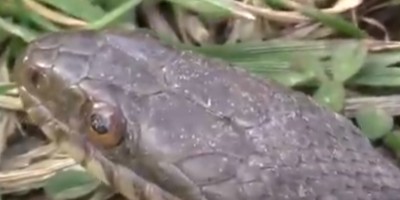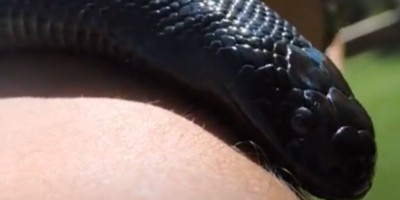
Common Snake Species in Chicago
 Common garter snake:
The common garter snake is a non-venomous snake that can be identified by different physical features. The most identifiable feature of these snakes is the stripe which runs the length of their bodies through the top. They are commonly found around human dwellings. They could also make their home in moist vegetation where they seek out the small animals that make up their diet. They feed on small animals like toads and frogs. Common garter snakes and the striped garter snake, which are found in Chicago Illinois, do not produce venoms but can bite intruders and predators. They can also release a foul-smelling musk.
Common garter snake:
The common garter snake is a non-venomous snake that can be identified by different physical features. The most identifiable feature of these snakes is the stripe which runs the length of their bodies through the top. They are commonly found around human dwellings. They could also make their home in moist vegetation where they seek out the small animals that make up their diet. They feed on small animals like toads and frogs. Common garter snakes and the striped garter snake, which are found in Chicago Illinois, do not produce venoms but can bite intruders and predators. They can also release a foul-smelling musk.
 Ring-necked snake:
With their secretive nature, these snakes could not be easily encountered. Yet, they are one of the common snakes of Chicago, Illinois. The snakes are small with a varying combination of patterns and colors. Ring-necked snakes have characteristic physical features like the ring around their necks, which gives them their name. Ring-necked snakes have dark-colored bodies. Their neck, which is bounded by a brightly colored ring, is a distinctive feature of the snakes. The ring around the neck of ring-necked snakes could be yellow, red, or orange in color.
Ring-necked snake:
With their secretive nature, these snakes could not be easily encountered. Yet, they are one of the common snakes of Chicago, Illinois. The snakes are small with a varying combination of patterns and colors. Ring-necked snakes have characteristic physical features like the ring around their necks, which gives them their name. Ring-necked snakes have dark-colored bodies. Their neck, which is bounded by a brightly colored ring, is a distinctive feature of the snakes. The ring around the neck of ring-necked snakes could be yellow, red, or orange in color.
 Northern watersnake:
The northern water snake is found in most parts of Illinois, including Chicago. They swim and are mostly found close to water bodies. The northern water snake also has a diet that is made up of aquatic creatures like toads, snails, and salamanders. They have an average length of three to five feet. They have bodies that are tan, brown, or gray in color. The snakes could be mistaken for venomous counterparts like copperheads and water moccasins. They could be found on water bodies or close to them when they bask.
Northern watersnake:
The northern water snake is found in most parts of Illinois, including Chicago. They swim and are mostly found close to water bodies. The northern water snake also has a diet that is made up of aquatic creatures like toads, snails, and salamanders. They have an average length of three to five feet. They have bodies that are tan, brown, or gray in color. The snakes could be mistaken for venomous counterparts like copperheads and water moccasins. They could be found on water bodies or close to them when they bask.
 Kingsnake:
Kingsnakes are medium-sized. They are well distributed across the US and are one of the commonest non-venomous snakes in Chicago, Illinois. The snakes could be mistaken for coral snakes because they possess similar bands to coral snakes. They live in a wide range of habitats and can be found in terrestrial and aquatic areas. The snakes can bite when they are threatened, although they do not release venoms. They also release a musk and could shake their tails in a similar fashion to rattlesnakes.
Kingsnake:
Kingsnakes are medium-sized. They are well distributed across the US and are one of the commonest non-venomous snakes in Chicago, Illinois. The snakes could be mistaken for coral snakes because they possess similar bands to coral snakes. They live in a wide range of habitats and can be found in terrestrial and aquatic areas. The snakes can bite when they are threatened, although they do not release venoms. They also release a musk and could shake their tails in a similar fashion to rattlesnakes.